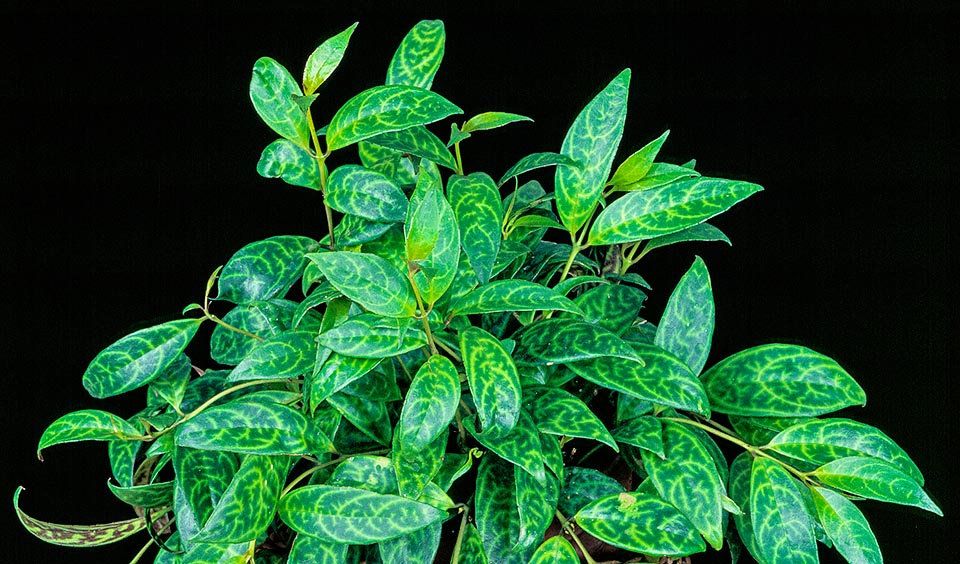Family : Gesneriaceae

Text © Pietro Puccio

English translation by Mario Beltramini
The plant is native to China (Yunnan), Malaysia, Myanmar, Thailand and Vietnam; where it grows in the humid forests between the 500 and 1.800 m of altitude.
The name of the genus comes from the combination of the Greek words “aischyne” = decency, shame and “anthos” = flower, with reference to the red colour of the flowers of many species belonging to the genus; the name of the species is the combination of the Latin words “longus” = long, and “caulis” = stem, stalk, with obvious reference.
Common names: tiger striped lipstick, zebra lipstick, zebra basketvine (English); columéia-marmore (Portuguese - Brazil); Gefleckte Sinnblume (German).
The Aeschynanthus longicaulis Wall. ex R.Br. (1839) is an evergreen epiphytic plant with thin, purple, semi-climbing or drooping stems, long up to about 80 cm.
The 6 to 12 cm long and 2-3 cm broad leaves, are opposite, from elliptic to oblanceolate, often glossy, of dark green colour, marbled of pale green on the upper page and reddish brown below; the apex is sharp and the margins are finely indented and wavy.

Epiphyte in the high humid forests of South East Asia, Aeschynanthus longicaulis is an evergreen epiphyte cultivable also in bright interiors © Giuseppe Mazza
Much ornamental plant essentially cultivated due to its decorative foliage, suitable to tropical and humid subtropical climates in semi-shaded position or in filtered sunlight; it does not bear, unless dry and for a quite short time, temperatures close to the 0 °C.
It requires a much porous and draining substratum which may be formed by coarse peat with 30% of siliceous sand or agri perlite. The watering are to be regular during the vegetative period, but without stagnations which may aver harmful; the nebulisations with non calcareous water are useful for avoiding unpleasant dots on the leaves, in particular during the warmest periods if the atmosphere is too dry; during the resting time, the watering are to be reduced in order to get the first layers of soil dry before giving water again.
Where the climate does not allow the permanent cultivation in open air, it is to be sheltered in a very luminous location at a temperature which must not be less than 15 °C, even if it may stand, if dry, some degrees less for a short time; if the ambient humidity is low, the pot may be placed on a wide saucer filled up with expanded clay or rubble with a layer of water, non in direct contact with the bottom of the pot, in way to increase the humidity. The pruning is possibly to be done by early spring in order to help its tillering and shortening too long stems, the change of pot is to be done in spring when the substratum becomes compact, indicatively every 2-3 years.
Synonyms: Aeschynanthus zebrinus Lem. (1846); Aeschynanthus zebrinus Van Houtte ex Walp. (1847); Aeschynanthus marmoratus T. Moore (1852).
→ To appreciate the biodiversity within the GESNERIACEAE family please click here.
